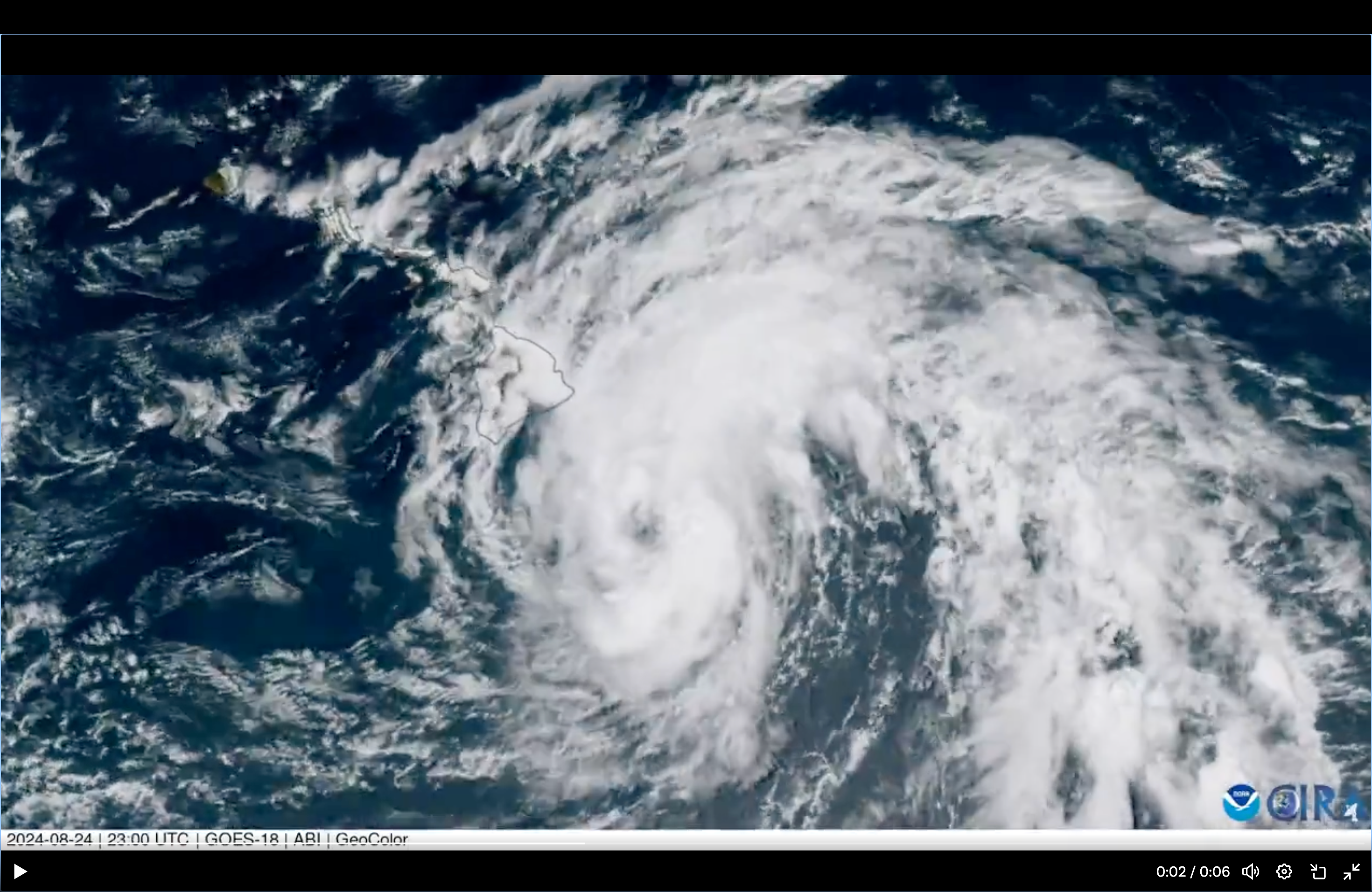Tropical Storm Hone soaks Hawaii and leaves thousands without power
Nearly 10,000 people lost power across Hawaii before 3am local time
Your support helps us to tell the story
From reproductive rights to climate change to Big Tech, The Independent is on the ground when the story is developing. Whether it's investigating the financials of Elon Musk's pro-Trump PAC or producing our latest documentary, 'The A Word', which shines a light on the American women fighting for reproductive rights, we know how important it is to parse out the facts from the messaging.
At such a critical moment in US history, we need reporters on the ground. Your donation allows us to keep sending journalists to speak to both sides of the story.
The Independent is trusted by Americans across the entire political spectrum. And unlike many other quality news outlets, we choose not to lock Americans out of our reporting and analysis with paywalls. We believe quality journalism should be available to everyone, paid for by those who can afford it.
Your support makes all the difference.Hurricane Hone whipped through the Hawaiian Islands on Sunday, bringing pounding rain and leaving thousands without power.
Hone reached Category-1 as its center passed 75 miles south of Kauai before weakening back into a tropical storm, according to the National Weather Service.
Maximum sustained winds were near 70 miles per hour, with higher gusts recorded.
Nearly 10,000 people lost power across Hawaii before 3am local time, according to outage tracker PowerOutageUS.
Hawaiian Electric, which serves 95 percent of the 1.4 million residents on the islands of Oahu, Maui, Hawaii, Lanai, and Molokai, said that crews had restored power to a majority of customers who lost electricity during the event.
By early Monday morning, that number had dropped to around 3,000 with most of those outages on Hawaii island.
Hawaii was expected to see wind and rain on Monday, with coastal marine warnings in effect.

Flash flood advisories were also in place overnight Monday on the Big Island, according to the Hawaii Emergency Management Agency. The NWS office in Honolulu advised residents to move to higher ground and avoid driving or walking through floodwaters.
But, water wasn’t the only factor hindering travel. The Hawaiian Department of Transportation worked to clear rocks and a boulder blocking Maui roadways. Trees and debris were also moved.
Hawaii Volcanoes National Park’s Mauna Loa road was also temporarily closed due to high winds. Most of the park had been shuttered due to hazards from Hone.
Over the weekend, the NHC said rainfall of two-to-four inches had already fallen across the windward region of the Big Island, with wind gusts over 60 miles per hour.
Utility Hawaiian Electric said gusty winds and heavy rains “may have partially uprooted trees or cracked branches that can easily fall and cause new outages” and cautioned residents and visitors to stay at least 30 feet away from any downed power lines.”
A tree had fallen onto power lines in Oahu, knocking out power for a few customers in the Mililani area.
Red flag advisories were cancelled for all islands over the weekend. The alerts are issued when warm temperatures, very low humidity, and stronger winds combine to raise fire dangers. Hone, whose name is Hawaiian for “sweet and soft,” poked memories still fresh of last year’s deadly blazes on Maui, which were fueled by hurricane-force winds.
The Aug. 8, 2023, blaze that torched the historic town of Lahaina was the deadliest U.S. wildfire in more than a century, with 102 dead. Dry, overgrown grasses and drought helped spread the fire.
More than 73 percent of the islands are currently threatened by moderate to severe drought conditions, according to the U.S. drought monitor.
The cause of the Lahaina blaze is still under investigation, but it’s possible it was ignited by bare electrical wire and leaning power poles toppled by the strong winds. The state’s two power companies, Hawaiian Electric and the Kauai Island Utility Cooperative, were prepared to shut off power if necessary to reduce the chance that live, damaged power lines could start fires, but they later said the safety measures would not be necessary as Hone blew past the islands.
As Tropical Storm Hone moves on, both Hurricane Gilma and newly-formed Tropical Storm Hector are moving westward. The NHC said Hector could strengthen in the coming days and Gilma strengthened to a Category 4 hurricane. It is forecast to remain a hurricane as it approaches the central Pacific basin, but gradual weakening is expected.
Weakening was forecast to continue as the storm tracked far north of Johnston Island Tuesday night.
With reporting from the Associated Press
The Independent will be revealing its Climate100 List in September and hosting an event in New York, which can be attended online.

Join our commenting forum
Join thought-provoking conversations, follow other Independent readers and see their replies
Comments